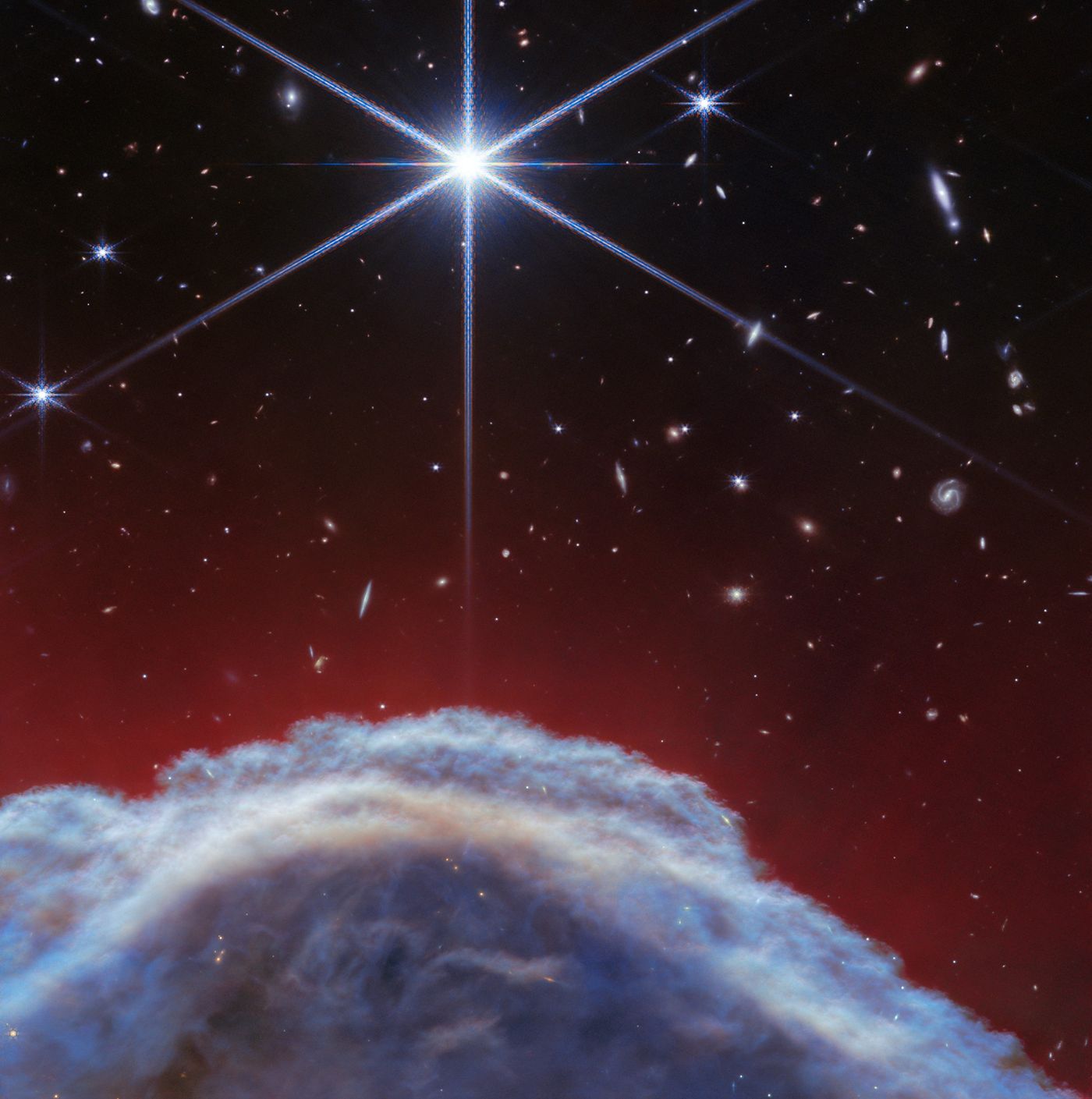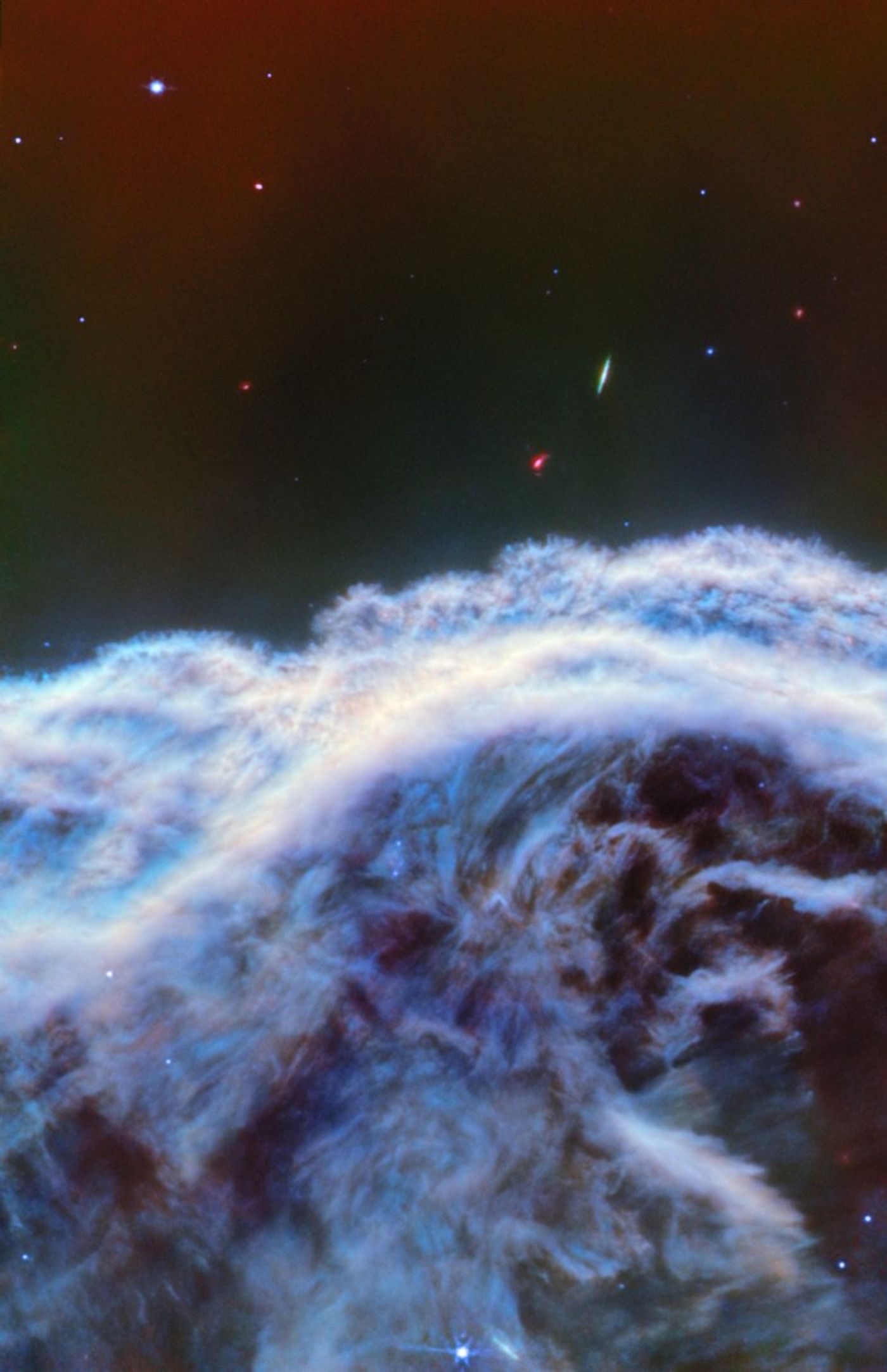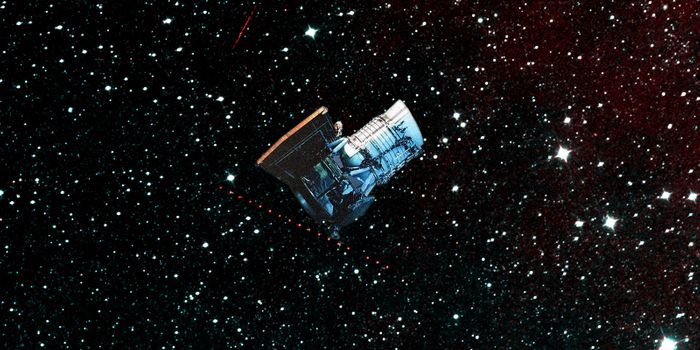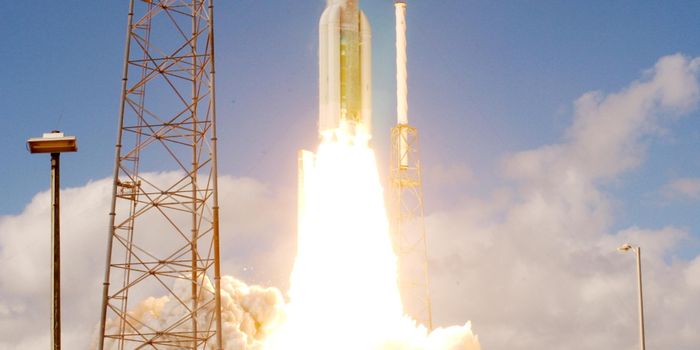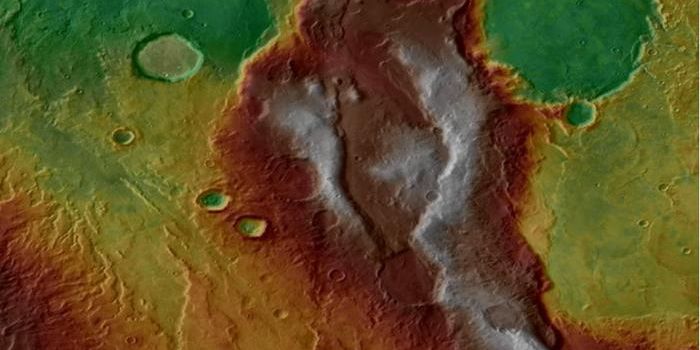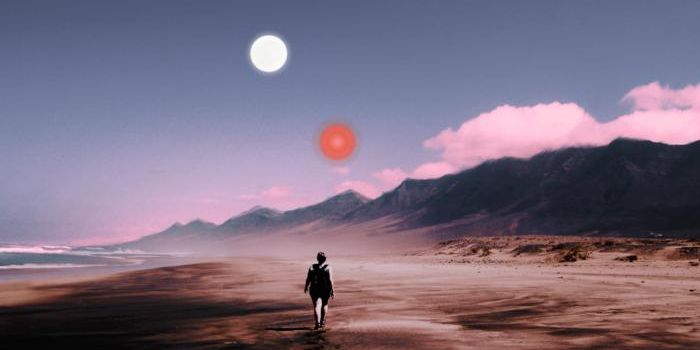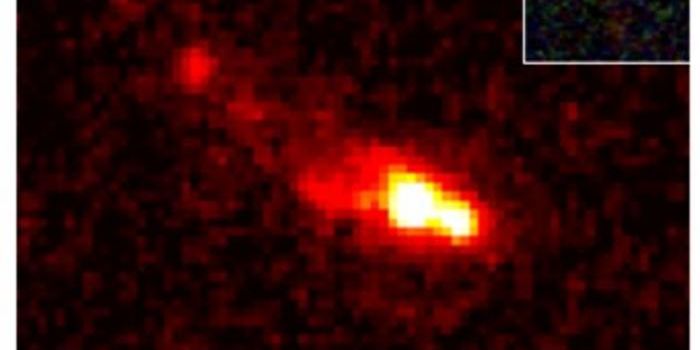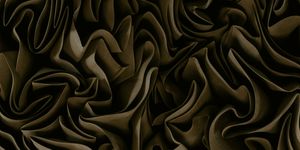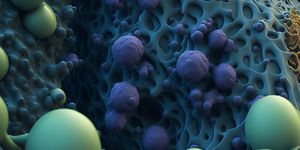Horsehead Nebula in a New Light: Webb's Breakthrough Infrared Imagery
The Horsehead Nebula is one of the most iconic spectacles in astronomy, having been imaged and photographed from a myriad of telescopic instruments, including amateur telescopes, ground-based telescopes, and even space-based telescopes. Most recently, NASA’s James Webb Space Telescope (JWST) obtained the most stunning images of the top of the Horsehead Nebula ever taken, accomplishing this with its powerful Near-Infrared Camera (NIRCam) and Mid-Infrared Instrument (MIRI). These images hope to provide astronomers with new details about this mysterious and long-studied nebula, which resides approximately 1,375 light-years from Earth.
With its NIRCam, Webb revealed molecular hydrogen and atomic hydrogen gas, along with what’s called the photodissociation region, which is a warm region of gas and dust that resides between the cold nebula and the fully ionized gas of space. With MIRI, Webb revealed a piece of the horsehead’s “mane”, which consisted of dusty silicates and polycyclic aromatic hydrocarbons (PAHs), which are known on Earth as naturally occurring in gasoline, crude oil, and coal, and are significant contributors to climate change.
NIRCam image of the top of the Horsehead Nebula. (Credit: NASA, ESA, CSA, K. Misselt (University of Arizona) and A. Abergel (IAS/University Paris-Saclay, CNRS))
MIRI image of the "mane" of the Horsehead Nebula. (Credit: NASA, ESA, CSA, K. Misselt (University of Arizona) and A. Abergel (IAS/University Paris-Saclay, CNRS))
As noted, this is not the first time the Horsehead Nebula has been imaged by space-based telescopes, as the European Space Agency’s Euclid spacecraft and NASA’s Hubble Space Telescope have both captured incredible images of this famous nebula. The most recent JWST images, however, are by far the most detailed and enhanced, providing astronomers with a wealth of new knowledge about this nebula.
Going forward, astronomers will be analyzing the spectroscopy data to learn more about the physical and chemical characteristics of the nebula’s material that spans its entirety.
What new discoveries will JWST make about the Horsehead Nebula in the coming years and decades? Only time will tell, and this is why we science!
As always, keep doing science & keep looking up!
Sources: Wikipedia, NASA, Centers for Disease Control and Prevention
